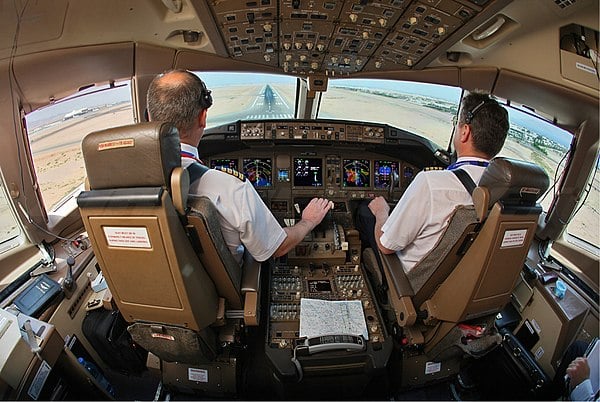Different lines of business follow a variety of safety protocols. Aboard an aircraft, pilots are to follow the Sterile Cockpit Rule. But what is it about and how did it come to be?
The Sterile Cockpit Rule is a Federal Aviation Administration (FAA) regulation that requires flight crews to abstain from discussing anything other than topics regarding the aircraft and the flight below 10,000 feet.
Why is the Sterile Flight Deck Rule Necessary?
The Sterile Flight Deck Rule clearly defines when it is time to set aside non-flight-related activities and focus on the task they were meant to do. This helps ensure the overall safety of everything aboard the aircraft.
Unfortunately, in spite of the existence of the sterile cockpit rule for the past decade, pilots and aircraft crew still continue to have accidents that could have been prevented. While at most times, disobeying the rules are not intentional, the consequences of not complying with them can be quite serious. (Source: ASRS)
Origin of the Rule
During the early days of aviation, pilots didn’t really have time to do tend to non-essential activities. Back then, flying demanded one’s utmost attention. But as technology improved, and aviation progressed into the Jet Age flying an airplane became laxer and conducive to distractions.
The implementation of the rule was introduced when the Cockpit Voice Recorder was installed. The FAA found it necessary to create a standard operating procedure to avoid accidents. (Source: Aircraft Accident Report)
What Are the Common Distractions on the Flight?
Based on a review of 63 reports that have previously been collated by the analysts of ASRS, here are the common cockpit violations:
- 48% altitude deviations
- 14% course deviations
- 14% runway transgressions
- 14% general distractions
- 8% take-offs or landings without clearance
- 2% near mid-air collisions due to inattention and distractions
While the flight crew is expected to follow the sterile cockpit rule, there are instances when they are unintentionally broken. (Source: ASRS)
Extraneous Conversation
This is the most habitual offense between the cockpit and flight crew. According to the reports, several captains would admit to having conversations not pertinent to flying duties.
Extraneous conversations do not only cover people in-flight but those in the control tower as well. (Source: ASRS)
Distractions from Other Flight Crew Members
Almost a quarter of the data show that distractions are caused by flight attendants that would call through the intercom. This ranked second in the most common distraction. (Source: ASRS)
While communication between the crew is allowed, flight attendants must observe the sterile flight deck rule.
Many flight attendants do not have a clear understanding of what “sterile cockpit” means. Flight attendants need to be given specific information about what type of information merits contacting flight crewmembers during the sterile period. Hesitancy or reluctance on the part of a flight attendant to contact the flight crewmembers with important safety information because of a misconception of the sterile cockpit rule is potentially even more serious than the unnecessary distraction caused by needless violations of the sterile cockpit.
Federal Aviation Administration
(Source: CRM Devel)
Non-Pertinent Radio Calls and PA Announcements
There were many instances when non-pertinent company radio calls and PA announcements were made below the regulated 10,000 feet. (Source: ASRS)
Sight Seeing
While you may think sightseeing is a harmless activity, it is hazardous and illegal to do while flying an aircraft. The reports described a cockpit full of sightseeing crew. (Source: ASRS)
